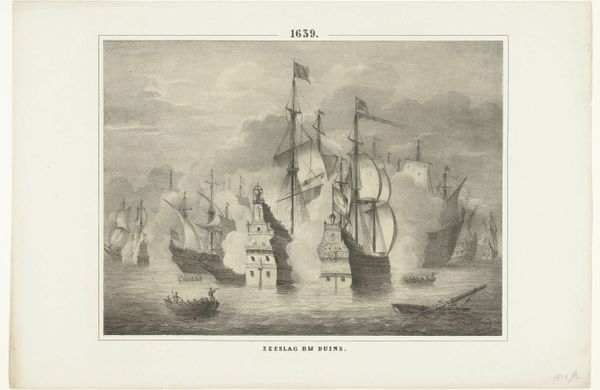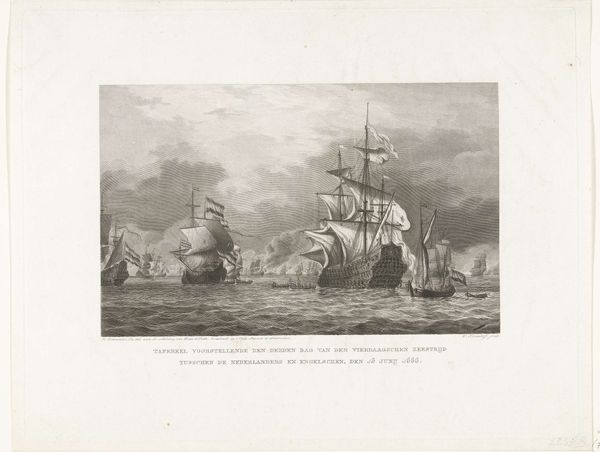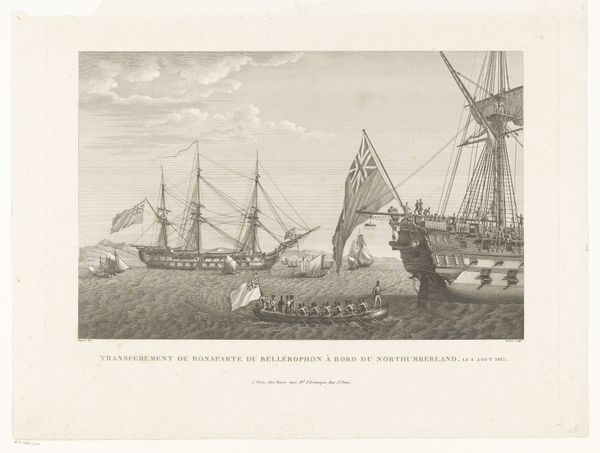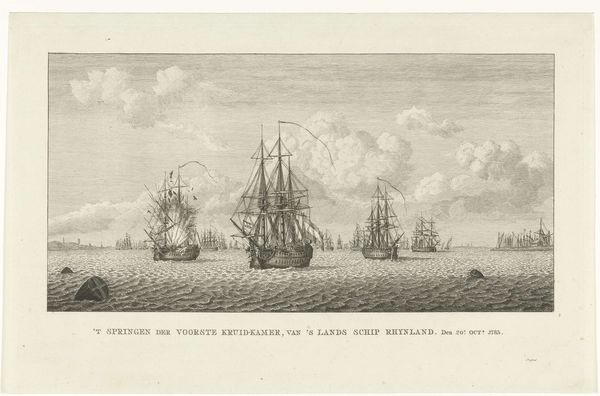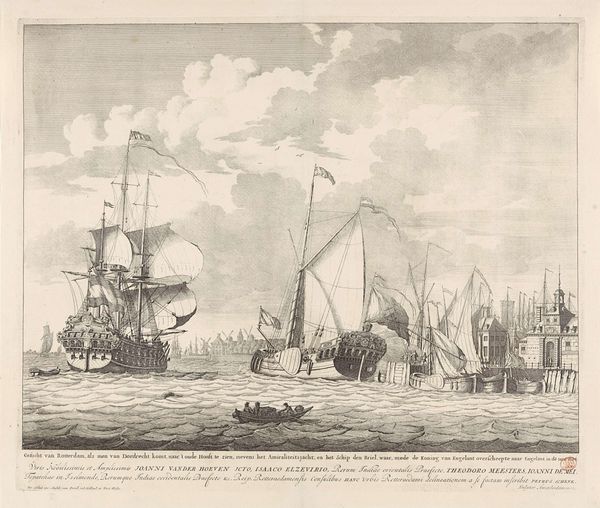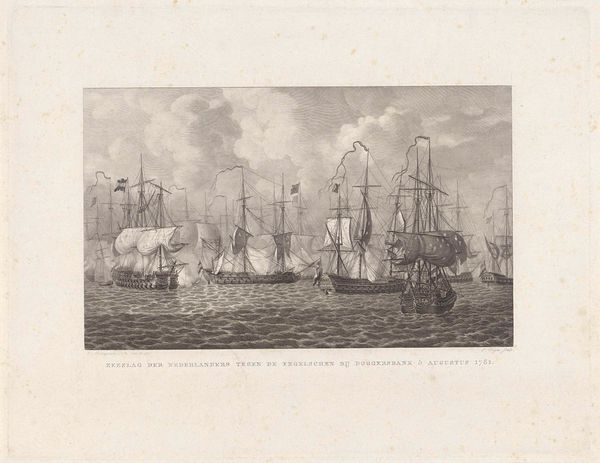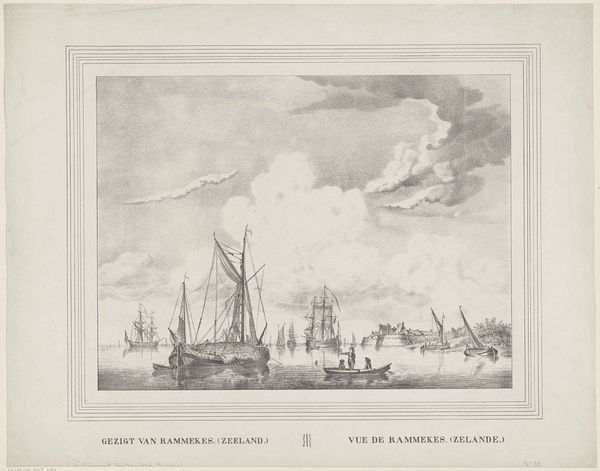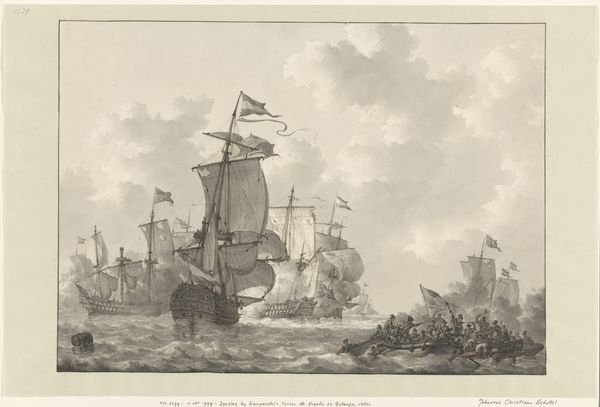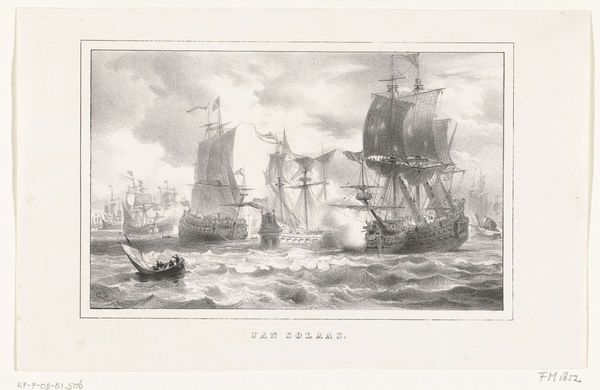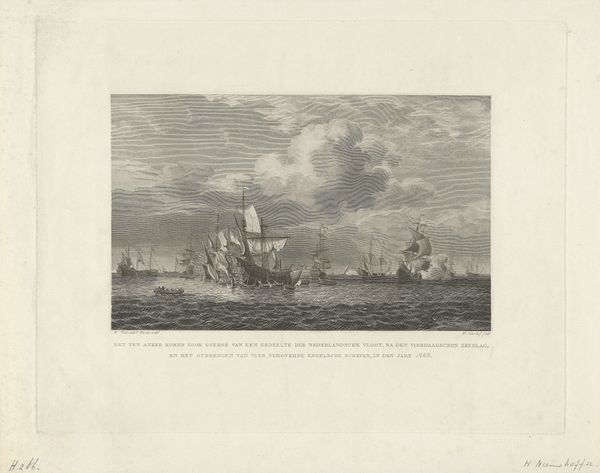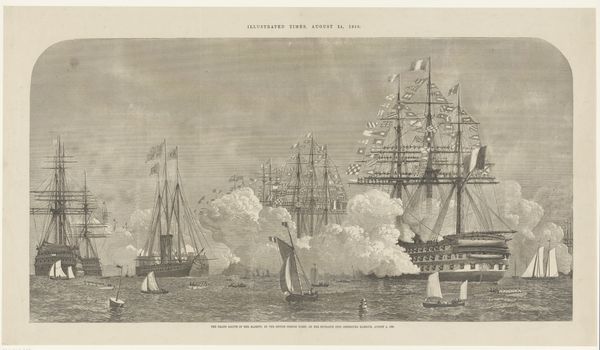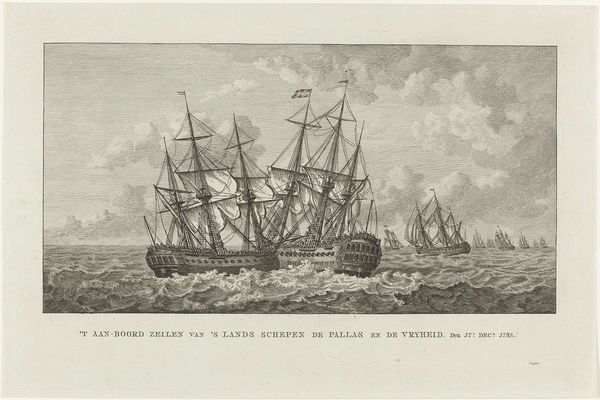
print, engraving
# print
#
landscape
#
history-painting
#
engraving
Dimensions: height 353 mm, width 528 mm
Copyright: Rijks Museum: Open Domain
Editor: This is "Bombardement van Algiers, 1816," an engraving by Albertus Anthonius Nunnink made sometime between 1853 and 1855. There's such dramatic intensity in the scene despite the monochromatic palette. What does this work say about how the Netherlands viewed warfare and naval power at the time? Curator: That's an astute observation. Think about this print as both a historical document and a piece of propaganda. While the depicted event—the Bombardment of Algiers in 1816—aimed to suppress piracy and free Christian slaves, it was also a display of British and Dutch naval might. How might the public at the time have received such an image? Editor: Perhaps with a mix of pride and anxiety? Pride in the nation's strength, but maybe anxiety about the cost of maintaining such power and engaging in these conflicts. Curator: Exactly. These prints were often commissioned by governments or wealthy patrons to shape public opinion. Consider the composition itself: the orderly arrangement of the ships, the billowing smoke lending drama, yet the scene feels somewhat controlled. Doesn’t that project an image of calculated power, not chaotic violence? How does it compare to, say, contemporary depictions of land battles? Editor: Land battles tend to be depicted more chaotically, from what I've seen, emphasizing the brutal hand-to-hand combat and the human cost. This image really does present a sanitized, almost glorified version of naval warfare. Curator: And that glorification serves a purpose. It reinforces the narrative of the Netherlands as a powerful, righteous force on the world stage, masking the complexities and brutalities of colonialism. So, in studying this print, we must ask: who is telling this story, and what are they trying to achieve? Editor: This has really opened my eyes to considering how political agendas influence historical art. Thank you! Curator: My pleasure. Remembering the social context helps us unlock richer meanings within even seemingly straightforward depictions of events.
Comments
No comments
Be the first to comment and join the conversation on the ultimate creative platform.
